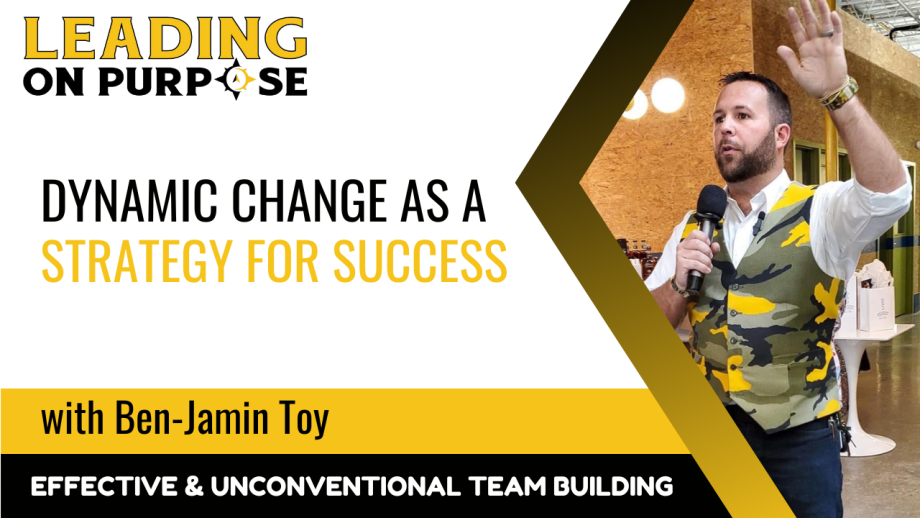
Dynamic Change as a Strategy for Success
Is your organization willing to change?
Many leaders stand by the most dangerous phrase in business: "This is how it's always been done." They have this stale mindset that just because something has worked in the past, the business never has to change.
The "if it ain't broke, don't fix it" mindset shows leaders who are only thinking about the day to day. They can't get outside this mindset to see the big picture and imagine the great heights their business could reach through dynamic change.
Sometimes it's good to do things the way they've always been done. However, if you don't open yourself up to making changes, you will never use efficiencies or additional versions. As markets shift, technology advances, and consumer preferences evolve, businesses must be able to adapt to stay relevant and competitive.
COVID Thrust Stagnate Industries Into Change
Let's take a look at what COVID did for business. It caused a huge shift in WHERE office work now takes place. Companies who always said employees will work in the office now allow people to work remotely. Companies adapted to offering services online. Corporations shifted and quickly designed, tested and released new products for the changing needs of consumers.
We made significant changes with Nature Adventures. We won't be going back to the way it was before and the same thing with On Purpose Adventures.

A good business is mobile, agile and versatile.
Review your procedures. Look at why the organization is doing things a certain way. Are there ways systems, cultures, procedures, services, etc could be improved? Are employees encouraged to speak up about ways to make the company better?
Do executives, managers and employees have time to review systems to look at what changes might work? Or is every moment of their day filled with the day-to-day tasks?
This is especially difficult for the small business owner. They have all these spinning plates and mud on the wall. The idea for setting time aside to simply review and brainstorm ways to adapt and change seems ludicrous. But this is exactly what I'm encouraging all leaders to do. Once you see the benefits of dynamic change, you'll never go back to the way things were done before.
Many organizations have benefitted from dynamic change.
These are just words until you see companies who have put dynamic change at the forefront of their business model.
These companies have pivoted and adjusted when the opportunity arose:
- Netflix revolutionized an entire industry when they went from mailing DVDs to people's home to streaming. They had to sell the consumer on the entire idea of streaming movies over the internet rather than playing physical DVDs. In the short term, it probably would have been easier to just continue mailing movies but it's now easy to see the long term success this change caused.
- IBM used sell meat slicers before the then CEO streamlined the company's focus to technology. He was met with resistance from managers but remained firm on the dynamic change the company was going through.
- The Walt Disney company has reinvented itself again and again. To remain relevant, they have released their classic films as live action and made explosive acquisitions like Pixar, Marvel, and Star Wars. If they never changed, all we would know about Disney would be Mickey Mouse, classic princess tales and a couple of theme parks. But the company is so much bigger and more dynamic than that.
Not changing is complacency.
Want to learn how to create a company culture centered on dynamic change?









